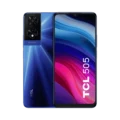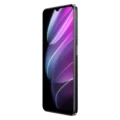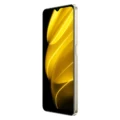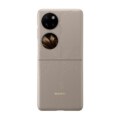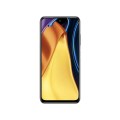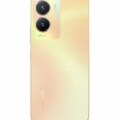- Specifications Pro
- Mobile specifications and prices
- comparison page
- Samsung Galaxy S21 Ultra vs Xiaomi Mi 11 Ultra: What is the best Ultra phone?
Samsung Galaxy S21 Ultra vs Xiaomi Mi 11 Ultra: What is the best Ultra phone?
Xiaomi Mi 11 Ultra and Samsung Galaxy S21 Ultra represent a new breed of luxury in smartphones, offering top-notch specs, advanced camera modules, and an excellent design, all for a very high price.
But which phone offers a more premium experience? What is the most balanced and usable day-to-day phone? And on which would we spend our money, if we only had to pick one phone?
Contents
hide
Let's take a closer look at the most luxurious Android phone ever, and compare the Samsung Galaxy S21 Ultra and Xiaomi Mi 11 Ultra to find out the difference between the two phones and the most important differences between them.
Design comparison between Samsung Galaxy S21 Ultra and Xiaomi Mi 11 Ultra
It is undeniable that this Xiaomi phone has a bulky body that proves difficult to fit in a pocket. And we mean quite literally because when we reviewed the phone to write that comparison, we had to put it in a backpack because it didn't fit in most jeans pockets.
This is not really due to the height and width of the phone. Although it is certainly large at 164.3 x 74.6 mm, this actually makes it slightly smaller than the Galaxy S21 Ultra which comes in at 165.1 x 75.6 mm.
The big obstacle in Mi 11 Ultra is the giant camera unit. While the phone is 8.4mm thick, which is half a millimeter thinner than the Galaxy S21 Ultra, the camera module makes the phone noticeably thicker.
This camera unit is not only thick, but also sports an all-ceramic back which comes in white or black.
Both phones have an extraordinary weight, as the Xiaomi Mi 11 Ultra comes in at 234 grams compared to the 228 grams in the Galaxy S21 Ultra.
We very much prefer the design of the Samsung Galaxy S21 Ultra overall. You can also get it in a wide range of colors. Aside from the many color options, it comes with a pretty seamless design.
Samsung's design on this still very large camera module is much more elegant than that of the Xiaomi phone, especially with the camera amazingly integrated into the phone's metal body.
There is no difference in terms of water and dust resistance, both phones have an IP68 rating, so they have the same standard of protection against water and dust.
Display differences
These are two very similar monitors, which are also among the best on the market. The Xiaomi Mi 11 Ultra has a 6.81-inch 120Hz AMOLED screen with a resolution of 1440 x 3200 pixels, and the higher resolution can be selected next to the 120Hz refresh rate and run at the same time.
Galaxy S21 Ultra comes with a 6.8 inch AMOLED display that is also capable of working at 120Hz refresh rate and Quad HD resolution at the same time.
In fact, the only real advantage that can tip the cuff on the Xiaomi Mi 11 Ultra, is that the peak brightness can reach a maximum of 1700 nits. While the Samsung Galaxy S21 Ultra screen peak brightness reaches 1500 nits. Don't let that influence your decision because both screens are clearly bright.
The difference in terms of camera
Arguably the main selling point of both these phones is their camera module. There are some interesting similarities and differences in their photographic mechanism.
Starting with the main cameras, Xiaomi preferred that the Mi 11 Ultra come with a larger sensor size over the larger resolution, as the phone comes with a 50MP front camera, which allows more light to enter. The Samsung Galaxy S21 Ultra may have a smaller main sensor, but with a resolution of 108MP.
Both phones take great photos that are full of detail and dynamic range. It's largely a matter of personal preference regarding the color receptivity of Xiaomi or Samsung, as Samsung tends to improve the colors of images via software more than its non-adjusted competitor.
When it comes to the ultra-wide lens, Xiaomi Mi 11 Ultra has a 48MP sensor, while Samsung only features a 12MP sensor. However, regardless of the difference in the resolutions of the two sensors, we generally prefer photos taken with the Samsung Galaxy S21 Ultra, while we found photos of the Xiaomi phone lens noticeably distorted at the edges.
Xiaomi Mi 11 Ultra comes with a 48MP periscope lens that supports 5x optical zoom, while the Galaxy S21 Ultra has a 10MP telephoto lens that supports 10x true optical zoom and another 10MP lens as well. Overall, the Samsung phone is more distinguished in all respects regarding this lens.
Samsung claims that its phone supports 100x hybrid optical zoom, while Xiaomi Mi 11 Ultra can go up to 120x. It's true that results above 30x are not acceptable, but the Galaxy S21 Ultra works best at extreme zoom levels.
Regarding the front cameras, the Samsung phone comes with a 40MP sensor while the Xiaomi phone has a 20MP camera. Samsung certainly excels in that aspect of the comparison, but this secondary screen makes taking selfies with the main camera easier on the Xiaomi phone.
In terms of video shooting, both phones can capture video in 8K quality at 24 frames per second or 4K at up to 60 frames per second. We shot several videos on the Mi 11 Ultra and have to admit they are among the best we've ever shot with a phone, and both phones have a range of modes suitable for vloggers. While both phones take great pictures with their main cameras, the Galaxy S21 Ultra wins that comparison due to its great flexibility and superior secondary cameras. Which makes the giant rear camera module of the Xiaomi phone look questionable.
Comparison of internal gear specs
It is very difficult to judge the performance between these two phones, as they both have known regional issues.
We're still pretty accustomed to Samsung's discrete processor policy so far. Basically, Qualcomm processors are used in the US and China versions, and their Exynos processor is everywhere else. Giving the user a lot of options would be a good thing were it not for the fact that Qualcomm processors are always superior.
In contrast, the Xiaomi Mi 11 Ultra uses only the Snapdragon 888. Unfortunately, the phone is only available in China, and any other way to buy it is by any traveler or retailer.
The Snapdragon 888 is already proven to be slightly faster than the Exynos 2100, so Xiaomi definitely has the edge. But then, we ran into some worrisome issues with the Mi 11 Ultra, which hampered some of our benchmark tests for long-term use.
It is also worth emphasizing that the Exynos processor is much more competitive than it was before. In everyday tasks, both phones deliver quite solid performance during light and heavy tasks, and no game is a problem at all.
The Xiaomi phone comes with 12 GB RAM, while the Samsung phone comes with 12 GB or 16 GB RAM.
We should also mention the fact that the Galaxy S21 Ultra has gained compatibility with the S Pen. You'll have to buy that stylus separately, but it won't be quite as compatible as its Note counterpart as the user will also lose some shortcuts to launch the camera and other apps. But other than that, you have the full Samsung Pen experience.
Another thing that needs to be compared is which user interface you prefer. Samsung's OneUI 3.0 is more streamlined than ever, with fewer unnecessary windows.
Xiaomi's MIUI is almost equally cool and annoying. There are plenty of customization options here, but it's also riddled with annoying bloatware which is why we give Samsung software the overall preference.
Battery (whichever provides better battery)
The differences are slight in terms of battery. Both flagship phones come with a massive 5,000mAh battery. With such power-hungry components in both phones, you'd better make the battery one of the most important criteria in favoring one phone over another. In fact, we wouldn't recommend either phone if we wanted a phone with more than a day of battery life.
With the Xiaomi Mi 11 Ultra, we've found that we often end a day of relatively light use with only 10%-20% of battery power left. With normal use, we'll see the battery run out completely by the time we go to sleep.
However, the Galaxy S21 Ultra wasn't much better. It was able to last through a day of moderate use at default 1080p/120Hz, but upping the resolution to QHD/120Hz drained the battery faster.
You'll likely charge fairly often with both phones, so for that matter, Xiaomi is taking the lead as its phone comes with a 67W fast charger, while Samsung has forced its users to provide their own because they haven't She included one in her phone package.
Even so, it only supports fast charging of up to 25W. This will charge the phone from 0 to 100% in just over an hour, while the Xiaomi fast charger does the same in about half the time.
Xiaomi also wins when it comes to wireless charging, with 67W speed also supported. If you buy a suitable charger, it won't come cheap. While the Galaxy S21 Ultra supports only 15W wireless charging.
Final Verdict Samsung Galaxy S21 Ultra vs Xiaomi Mi 11 Ultra Which is better
Buying any of these phones is not a decision to be taken lightly. They will first empty your pockets due to their exorbitant prices of over $1000, and then fill them completely due to their huge volumes.
What you get in return are two screens that are among the best, leading performance and excellent cameras with precise optical zoom.
With all of that in mind, we recommend the Samsung Galaxy S21 Ultra in most cases. In the end, it comes down to two main factors: a design that's easier to live with and an almost better camera system.
The Xiaomi Mi 11 Ultra is definitely a great phone, but the Samsung phone comes with the complete package for everything a user could want.
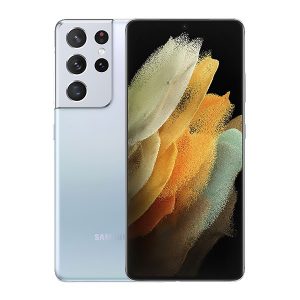
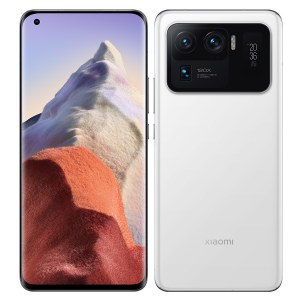
| |
| Price | |
| Our Rating | |
| Brand | Samsung Xiaomi |
| Category | Specifications and Prices Specifications and Prices |
Release Date
| Announcement Date | January 14, 2021 March 29, 2021 |
| Launch Date | February 2021 April 2021 |
Body
| Dimensions | 165.1 x 75.6 x 8.9 mm (6.5 x 2.98 x 0.35 in) 164.3 x 74.6 x 8.4 mm (6.47 x 2.94 x 0.33 in) |
| Phone Materials | Front glass (Gorilla Glass Victus), glass back (Gorilla Glass), aluminum frame Glass front (Victus Gorilla Glass), ceramic back, aluminum frame |
| Weight | 227 grams 234 grams |
| Phone Colors | Black, silver, titanium, navy, brown Black and White |
Display
| Display | Dynamic AMOLED touch screen, 16 Million colors OLED touch screen, 1 billion colors |
| Size | 6.8 inches 6.81 in |
| Resolution | 1440 x 3200 pixels, with a pixel density of 515 pixels per inch 1440 x 3200 pixels, a pixel density of 515 pixels per inch |
| protection layer | Corning Gorilla Glass Victus Gorilla Glass Diet |
| Screen-to-body ratio | 89.8% screen-to-body ratio 91.4% screen-to-body ratio |
| Other Features |
120Hz refresh rate HDR10+ Always-on display 1500 nits HDR10+ 120Hz refresh rate 1700 nits |
Internal Hardware
| Chipset | Qualcomm Snapdragon 888 - seven nanometers Qualcomm Snapdragon 888 - five nm |
| CPU | Octa-core (1 x 2.84 GHz Kryo 585 & 3 x 2.42 GHz Kryo 585 & 4 x 1.8 GHz Kryo 585) Octa-core (1 x 2.84 GHz Kryo 680 & 3 x 2.42 GHz Kryo 680 & 4 x 1.80 GHz Kryo 680) |
| GPU | Adreno 660 Adreno 660 |
| Memory Card | Yes No |
| RAM | 12 - 16 GB 8 - 12 GB |
| Internal Storage | 128 - 256 - 512 GB 256 - 512 GB |
Camera
| Main | Quad Triple |
| 1st Sensor | 108 MP, f/1.8, (wide) 50 MP (wide), f/2.0 aperture |
| 2nd Sensor | 10 MP (Periscope Telephoto), f/4.9, x10 optical zoom 48 MP (Periscope Telephoto), f/4.1, 5x optical zoom, 120x hybrid zoom |
| 3rd Sensor | 10 MP (telephoto), 3x optical zoom 48 MP (ultrawide), f/2.2 |
| 4th Sensor | 12 MP, f/2.2, (ultrawide) |
| Features | LED flash, HDR, panorama Dual-tone LED flash, panorama, HDR |
| Video Recording | 8K@24fps, 4K@30/60fps, 1080p@30/60/240fps, 720p@960fps, HDR10+, stereo sound rec., gyro-EIS & OIS 8K@24/30fps, 4K@30/60fps, 1080p@30/60/120/240/960fps, gyro-EIS, HDR10 rec. |
| Selfie Camera | Single Single |
| - | 40 MP (wide), f/2.2 aperture 20 MP (wide), f/2.2 aperture |
| Features | Dual video call - Auto-HDR HDR |
| Video Recording | 4K@30/60fps, 1080p@30fps 1080p@30fps, 720p@120fps, gyro-EIS |
Battery
| Capacity | 5000 mAh non-removable 5000 mAh non-removable |
| Type | Lithium Polymer Lithium Polymer |
| Fast Charging | 25 Watts - USB Power Delivery 3.0 67 W, up to 100% in 36 minutes |
| wireless charging | 15W 67W |
Sound
| 3.5mm jack | No No |
| Other features of the sound | 32-bit/384kHz audio - Tuned by AKG 24-bit/192kHz audio |
| Loudspeaker | Yes, with stereo speakers Yes, with stereo speakers |
Additional Features
| Safety | Under-Display fingerprint sensor - ultrasonic Under-display fingerprint sensor - optical |
| Sensors | Accelerometer, gyro, proximity, compass, barometer, ANT+, Bixby, Samsung DeX Accelerometer, gyro, proximity, compass, barometer |
Model
| Model number | SM-G998B ، SM-G998B / DS |
| Phone Name | Samsung Galaxy S21 Ultra Xiaomi Mi 11 Ultra |
Phone Price
| Price in US Dollar | $1,250 914 dollars |
| Price in Saudi Arabia | 4,690 SAR 3,427 riyals |
| Price in Iraq | 1,826,250 Dinars 1335811 dinars |
| Price in India | 91,380 Rupees 66510 rupees |
| Price in Egypt | 19,575 EGP 14360 EGP |


|

